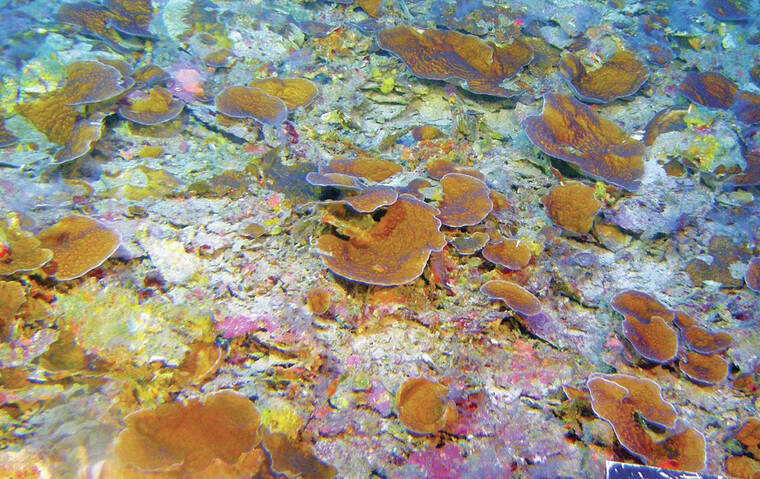LIHU‘E — In a first for oceanography, a new University of Hawai‘i at Manoa faculty-led study cataloged the growth of Hawai‘i’s deepest coral reefs, granting scientists new insight on a keystone of the ocean’s ecosystems.
Reef-building corals use photosynthesis to build reefs through calcification. However, available light declines rapidly with increasing water depth, meaning corals farther underwater have less light to obtain energy for building.
Below about 200 feet, calcification rates for light-dependent corals had never been measured before. In a study published Tuesday, lead author and graduate affiliate faculty at UH Manoa’s School of Ocean and Earth Science and Technology Samuel Kahng became the first to report this, measuring the rates from coral calcification off Hawai‘i’s coast from 230 to 360 feet below sea level.
“In addition to being from the deepest coral analyzed, these are by far the lowest calcification rates ever measured for healthy, light-dependent corals in their natural habitat,” Kahng said. “These rates are 20 to 40 times slower than observed in shallow water corals.”
At these depths, corals receive only a fraction of light compared to their shallow-water contemporaries. To get around this issue, the Leptoseris spp. coral species makes use of a clever solution, forming incredibly thin horizontal plate-like skeletons. The coral’s slender form allows it to maximize the area that can be built despite low light and low calcification rates.
In 2020, Kahng and his colleagues published a study revealing that these long, thin skeletons grow much faster than expected when factoring in low light availability.
“The corals’ ability to quickly grow horizontal surface area is impressive, especially given the low calcification rates,” Kahng said. “What this points to is the incredibly efficient use of calcification.”
Hawai‘i’s oceans have also helped these corals flourish more than most maritime regions — because the islands’ waters are particularly clear, extra light further feeds the corals. Because of this, coral reef ecosystems in Hawai‘i extend offshore to extreme depths, with specialized light-dependent coral communities as deep as 500 feet.
With little still known about these unique deep water coral communities, Kahng and his colleagues plan to continue their research, seeking answers as to how the corals thrive using such limited light and how conservationists can better protect the corals and the species that rely on them.
“Hawai‘i has much more vertical habitat compared to other coral reef ecosystems around the world,” Kahng said.
“These deep ‘mesophotic’ (low-light) coral ecosystems can cover more habitat area than shallow water coral reefs. However, the general public rarely sees them, so they present unique ecosystem management and conservation challenges.”
•••
Jackson Healy, reporter, can be reached at 808-647-4966 or jhealy@thegardenisland.com.


